Abstract
Background: A number of books, articles and checklists have been published on Lesotho’s flora. The species presented here have been recorded for South Africa but have not previously been recorded for Lesotho.
Objectives: As part of a study aimed at updating biodiversity records of the southern parts of Lesotho (Qacha’s Nek and Quthing districts), with the main focus of compiling a checklist for the Sehlabethebe National Park, this report presents plant species that have until now not been recorded for the Lesotho flora.
Method: Several field trips were undertaken between 2004 and 2009. Plant identification was done based on observation and photographic records. After the compilation of the checklist, it became clear that two of the species observed had not been previously recorded for Lesotho. A follow-up trip was carried out in February 2016, during which plant specimens of the presumed new records were collected and deposited at the National University of Lesotho Herbarium (ROML) [and the University of Johannesburg Herbarium (JRAU)]. Plant identification was confirmed by experts in the family Apocynaceae.
Results: Two species not previously recorded for Lesotho, namely Ceropegia africana subsp. barklyi and Duvalia caespitosa subsp. caespitosa, were found during the exploration of the southern parts of Lesotho which included the Sehlabathebe National Park.
Conclusions: The fact that two species have been recorded in Lesotho for the first time clearly indicates that documentation of the flora of Lesotho needs to be updated. This work is therefore regarded as complementary to previous publications on the Lesotho flora.
Introduction
Lesotho is a completely landlocked mountainous Kingdom and is the only country in the world whose entire land surface lies at elevations higher than 1000 m above sea level (masl) (with its lowest point at 1400 masl and its highest point at 3482 masl). Quthing and Qacha’s Nek districts (the study area) are located in the southern part of Lesotho, and Sehlabathebe National Park (SNP) is one of the iconic features in the Qacha’s Nek district. The SNP is Lesotho’s first National Park and was established in 1969. In June 2013, it was listed as an extension of the Maloti-Drakensberg World Heritage Site (www.peaceparks.co.za), and it forms part of the Drakensberg Alpine Centre (DAC) which is renowned for its high levels of plant diversity and large number of endemic and threatened species, harbouring some 2800 plant species with 16% of flowering plants reported to be endemic (Carbutt & Edwards 2003).
Phillips (1917) published the first account of plants in Lesotho, with a treatise on the flora of the Leribe Plateau and surrounding areas. This work served as the primary source for Jacot Guillarmod’s (1971) comprehensive documentation of Lesotho’s flora. Thereafter, Keller (1980) published Wildflowers of Sehlabathebe National Park in which he listed only 24 plant taxa. Schmitz (1982) produced the first illustrated guide of Lesotho’s flowering plants in which she included about 300 species. Two field guides published by Pooley (1998, 2003) included some elements of Lesotho’s flora, particularly the sub-alpine and alpine vegetation. Germishuizen and Meyer (2003) included Lesotho in their checklist of southern African plants. A checklist including about 3000 vascular plant species (covering bryophytes, pteridophytes, gymnosperms and angiosperms) was published by Kobisi (2005). However, none of the above publications indicated that representatives of the genera Ceropegia and Duvalia occur naturally in Lesotho.
Methodology
Study area
The study area comprised two districts in the southern part of Lesotho, namely Qacha’s Nek and Quthing, with the Sehlabathebe National Park as the main focus (Figure 1).
 |
FIGURE 1: Maps showing the location of the study area. |
|
Plant collection
Several field trips led by the first author were undertaken between 2004 and 2009. Plant identification was done based on observations in the field and photographs. A checklist was compiled and compared against the existing literature, and new species for the country were extracted. Follow-up trips were carried out in February and April 2016, with the specific intention of collecting specimens for authentication of identifications. Voucher specimens of the presumed new records were collected and deposited at the National University of Lesotho Herbarium (ROML) with duplicates at the University of Johannesburg Herbarium (JRAU). Plant identifications based on photographs were confirmed by Dr Adam Shuttleworth (University of KwaZulu-Natal), who is an expert in the ecology and evolution of asclepiads and stapeliads, and Prof. Peter Bruyns (University of Cape Town), who is an Apocynaceae authority. For confirmation of new records, information was sourced from the collection material examined and from the literature. Databases of Edinburgh Herbarium (E) and the National Herbarium, Pretoria (PRE) were searched to verify that the subspecies had not previously been recorded from Lesotho.
Results
The surveys resulted in two genera, each with one species and one subspecies, which, according to the literature and herbaria consulted, had not been previously recorded from Lesotho. These taxa are illustrated in Figure 2.
 |
FIGURE 2: The two species recorded for the first time in Lesotho. |
|
Ceropegia africana R.Br. subsp. barklyi Bruyns
Family: Apocynaceae.
Stems slender, arising from a swollen underground tuber; leaves succulent, ovate with pointed tips, green with the lower surfaces turning pinkish-purple when exposed to light (Figure 2a). Two flowers at the nodes, tube more or less straight, the elongated corolla lobes proportional to the corolla tube, the inside of corolla lobes with dark hairs.
According to Bruyns (1985), in the Cape provinces this subspecies occurs from Queenstown and East London to both north and south of the Kei River and as far north as north of Butterworth, near Morley Mission Station, where it was originally found by Bowker.
Based on the latest checklist of South African plants (Germishuizen et al. 2006), this subspecies occurs in Mpumalanga, KwaZulu-Natal, Western Cape and Eastern Cape. However, the Plants of Southern Africa (POSA) website (http://newposa.sanbi.org/) as well as an examination of specimens verified by an expert in the field records specimens from KwaZulu-Natal and the Eastern Cape only (Figure 3).
 |
FIGURE 3: Distribution map of Ceropegia africana subsp. barklyi in South Africa and Lesotho. |
|
Ecology: The plant grows on rocky slopes.
Lesotho: 3028 (Matatiele): Matšela-habeli, Ha Mpiti, Qacha’s Nek, (–BA), 1734 m, 25 February 2016, K. Kobisi, A. Moteetee, L. Seleteng Kose and S. van Vuuren 018 (JRAU, ROML) (Figure 3).
Duvalia caespitosa (Masson) Haw. subsp. caespitosa
Family: Apocynaceae.
This low-growing, small, perennial plant is characterised by cylindrical, densely branched, succulent creeping stems with teeth-like projections. Flowers are star shaped with five fleshy petal-like lobes, borne on maroon stalks (Figure 2b). Corolla maroon, glossy.
Germishuizen and Meyer (2003) and Germishuizen et al. (2006) list the species, which includes three subspecies, as being widely distributed in the Northern Cape, Western Cape and Eastern Cape. Similarly, according to Meve (2012) and herbarium specimens examined, D. caespitosa subsp. caespitosa has been recorded from the Cape provinces of South Africa, radiating into southern Namib and the Free State.
Ecology: The plant grows in gravelly sandy soil among grass.
Lesotho: 3028 (Matatiele): Qhoali, Quthing, (–AA), 1653 m, 20 April 2016, K. Kobisi, A. Moteetee, L. Seleteng Kose and S. Van Vuuren 034 (JRAU, ROML) (Figure 4).
 |
FIGURE 4: Distribution map of Duvalia caespitosa subsp. caespitosa in South Africa and Lesotho. |
|
Discussion and conclusions
Both species reported here belong to the family Apocynaceae, which is represented by 21 genera and 52 species in Lesotho (Kobisi 2005). Ceropegia africana subsp. barklyi was previously known to occur at low altitudes of up to 1080 m; however, this new record shows a much higher elevation of 1734 m. Duvalia caespitosa subsp. caespitosa was known to occur at low to medium altitudes in the summer rainfall areas in all the Cape provinces and two localities in the Free State; however, the newly recorded altitude of 1653 masl is much higher than previously recorded localities. Although only two species are being reported here, occurrence data show that the country as a whole is under collected, possibly because there are many parts of the country and habitats that are difficult to access.
Acknowledgements
The authors would like to thank the Maloti-Drakensberg Transfrontier Project for the opportunity to conduct the research. They acknowledge financial support from the University of Johannesburg. The authors are indebted to Dr Tony Dold for the photo of Ceropegia africana subsp. barklyi. Prof. Bruyns and Dr Shuttleworth are gratefully acknowledged for assistance with confirmation of plant identifications.
Competing interests
The authors declare that they have no financial or personal relationships that may have inappropriately influenced them in writing this article.
Authors’ contributions
K.K. was responsible for fieldwork and data collection in Sehlabathebe and surrounding areas. L.S.K. prepared the manuscript and A.M. was responsible for manuscript editing and providing important additional information, as well as facilitation of the collection of voucher specimens.
References
Bruyns, P.V., 1985, ‘Notes of Ceropegias of the Cape Province’, Bradleya 3, 35.
Carbutt, C. & Edwards, T.J., 2003, ‘The Flora of the Drakensberg Alpine Centre’, Edinburgh Journal of Botany 60, 581–607. https://doi.org/10.1017/S0960428603000428
Germishuizen, G. & Meyer, N.L. (eds.), 2003, Plants of southern Africa: An annotated checklist, Strelitzia 14, National Botanical Institute, Pretoria.
Germishuizen, G., Meyer, N.L., Steenkamp, Y. & Keith, M. (eds.), 2006, A checklist of South African plants, Southern African Botanical Diversity Network Report No.41, SABONET, Pretoria.
Guillarmod, A.J., 1971, Flora of Lesotho, Cramer, Lehre.
Keller, N.J., 1980, Wildflowers of Sehlabathebe National Park, Sehlabathebe, Mazenod Institute, Lesotho.
Kobisi, K., 2005, Preliminary checklist of the plants of Lesotho, Southern African Botanical Diversity Network Report No.34, SABONET, National Botanical Institute, Pretoria.
Maloti Drakensberg route, viewed n.d., from http://www.malotidrakensbergroute.com
Meve, U., 2012, The genus Duvalia (Stapelieae): Stem-succulents between the Cape and Arabia, Springer-Verlag, Wien (Vienna), Austria.
Peace Parks Foundation, viewed n.d., from http://www.peaceparks.co.za
Phillips, E.P., 1917, ‘A contribution to the flora of the Leribe Plateau and environs’, Annals of the South African Museum 16, 1–379.
Pooley, E., 1998, A field guide to wild flowers of KwaZulu-Natal and the eastern region, Natal Flora Publications Trust, Durban.
Pooley, E., 2003, Mountain flowers, The Flora Publications, Durban.
Sanbi, Treatened Species programme, viewed n.d., from http://redlist.sanbi.org/
Schmitz, M., 1982, Wild flowers of Lesotho, National University of Lesotho, Roma.
Unesco, World Heritage list: Maloti-Drakensberg Park, viewed n.d., from http://whc.unesco.org/en/list/985 www.llifle.com/Encyclopedia/SUCCULENTS/Family
|


